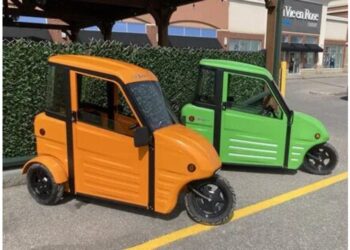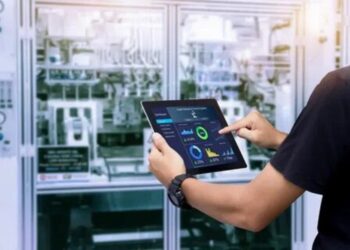The “Global EV Cathode Material Market: Analysis By Supply, By Demand, By Battery Type (Lithium ion Battery, Lead Acid Battery & Other), By Region Size and Trends with Impact of COVID-19 and Forecast up to 2028” report has been added to ResearchAndMarkets.com‘s offering.
The global EV cathode material market in 2022 was valued at US$6.58 billion. The market is expected to reach US$10.77 billion by 2028.
The growing adoption of electric vehicles which is being supported by the rising government subsidies & clean energy as government of different countries are promoting electric vehicles with the subsidies, policy changes and regulation on carbon emissions, is also a major reason behind the growing demand for cathode materials in the sector.
Therefore, the rising government subsidies & clean energy is one of the main factors that would drive the demand for EV cathode material in the forthcoming years. The market is expected to grow at a CAGR of approx. 8% during the forecasted period of 2022-2028.
Market Segmentation Analysis:
- By Battery Type: The report provides the bifurcation of the market into three segments based on the types of battery: Lithium-Ion Battery, Lead Acid Battery and other battery types. In 2022, Lithium-ion battery held a major share in the market. On the other hand, Lead acid battery segment is expected to grow at the highest CAGR in the forthcoming years as lead dioxide and lead have the lowest energy densities and rarely discharge highly efficiently, leading to its growing adoption. Along with this, Lead-acid cathode materials are up to ten times cheaper than modern nickel-metal hydride, lithium-ion, and lithium-polymer batteries being developed for high-performance automobiles, further expected to propel the overall market growth lead acid battery type in the coming years.
- By Region: The report provides insight into the EV cathode material market based on the regions Asia Pacific, North America, Europe, and ROW. Asia Pacific held the major share in the market owing to the increasing investment by major electric vehicle manufacturers and availability of cheap labour in the region. China market dominated the region due to the swiftly escalating year-on-year adoption rate of mild-hybrid electric vehicles across the region.
- In North America, the US is the dominating region. Whereas, in Europe, the UK dominated the market owing to the rising supportive government policies and regulations, increasing environmental concerns, and growing adoption of electric mobility in the region.
- By Supply: In the report, the global EV cathode material market supply is given as cathode materials are gaining momentum as a significant components of rechargeable batteries, such as nickel-metal hydride batteries, lithium-ion batteries, and others. One of the primary reasons for the rising trend in EV cathode material supply is the increasing number of strengthened rules for phasing for internal combustion engines and rising incentives and subsidies for EV adoption. The global EV cathode material market by supply is divided into six regions namely, China, South Korea, Japan, Europe, the US, and rest of the World. In 2022, the global EV cathode material supply was dominated by China, accounting for more than half of the global EV cathode material supply which is anticipated to grow manifolds in the forecasted period, due to the increasing adoption of EVs in the economy.
- By Type: In the report, the global EV cathode material supply is further divided based on type: NMC (Lithium Nickel Cobalt Manganese Oxide)/NCA (Lithium Nickel Cobalt Aluminium Oxide), and LFP (Lithium Ferrous Phosphate). NMC/NCA dominated the supply of the EV cathode material market in the year 2022. NMC/NCA is the largest category of EV cathode materials. Ternary cathode materials (NMC) have nickel, manganese and cobalt as their principal components, and as the cathode materials for lithium ion secondary batteries, are used mainly in batteries aimed at electrically-powered cars, including hybrid vehicles. Growing demand for lithium nickel cobalt aluminum oxide (NCA) due to its high specific power, specific energy and long lifespan is anticipated to increase the growth of the NMC/NCA supply during forecast period.
- By Demand: The report provides a glimpse of the EV cathode material demand around the world. One of the primary reasons for the rising trend in EV cathode material demand is the increasing adoption of electric vehicles, which require large quantities of lithium-ion batteries. Electric vehicles require large quantities of lithium-ion batteries, which in turn require significant amounts of cathode materials. The cathode materials demand is also benefiting from increased investment in research and development projects, which is expected to result in higher demand for these materials in coming years.
- By Type: In the report, the global EV cathode material demand is further divided based on on type: NMC (Lithium Nickel Cobalt Manganese Oxide)/NCA (Lithium Nickel Cobalt Aluminium Oxide), and LFP (Lithium Ferrous Phosphate). NMC/NCA dominated the supply of the EV cathode material market in the year 2022. With increasing environmental degradation and the deteriorating air quality levels in several countries, the deployment of electric vehicles is increasing rapidly. This is, in turn, pushing up the requirement for lithium-ion batteries, which is subsequently causing the expansion of the cathode material for electric vehicle lithium-ion batteries.
Market Dynamics:
Growth Drivers: The global EV cathode material market has been growing over the past few years, due to factors such as growing adoption of electric vehicles, escalating fuel prices, mounting environmental concerns, declining prices of lithium-ion-battery, and many other factors.
Additionally, the rising government subsidies & clean energy is one of the most significant drivers for EV cathode material, as government of different countries are promoting electric vehicles with the subsidies, policy changes and regulation on carbon emissions, leading to growing demand for cathode materials in the sector.
Moreover, the declining prices of Lithium-ion batteries, to support to the increasing demand for cathode materials as these are the main component of Li-ion batteries and they determine the energy density of a cell through cell voltage and/or capacity.
Challenges: However, the market has been confronted with some challenges specifically, instability of raw material and safety issues, increasing environmental impacts associated with NCM and developmental issues in cathode materials for Li-ion batteries, etc.
Trends: The market is projected to grow at a fast pace during the forecast period, due to various latest trends such as increasing ban on ICE vehicles, surging demand for zero emission vehicles, growing shift towards renewable consumption, etc. Additionally, the ongoing developments in battery technology is one of the most significant drivers for EV cathode material, as improved battery technology is critical for advancements in a variety of applications ranging from hybrid electric vehicles to consumer electronics, and improved battery performance depends on the development of materials for the various battery components, which is expected to offer lucrative opportunities for the EV cathode material market in the future.
Competitive Landscape:
The global EV cathode material market is fragmented, with key players operating on global and regional levels. The key players in the global EV cathode material market are:
- BASF SE
- 3M Company
- Umicore SA
- POSCO Future M Co., Ltd.
- Mitsubishi Chemical Group Corporation
- Johnson Matthey PLC
- Kureha Corporation
- Mitsui Mining & Smelting Co., Ltd.
- Sumitomo Metal Mining Co., Ltd.
- LG Corporation (LG Chem Ltd.)
- Hitachi Ltd. (Hitachi Metals, Ltd.)
- Toda Kogyo Corp.
- NEI Corporation
Some of the strategies among key players in the market for EV cathode materials are platform development and strategic alliances to expand their respective portfolios and gain a robust footing in the global market. For instance, in May 2022, Umicore inaugurated their new global R&D center for Cathode Materials in Cheonan, Korea.
It will focus on producing the next generation of battery materials, including very high-nickel NMC, low-cobalt NMC, manganese-rich chemistries, and solid-state battery technologies. Whereas, in April 2022, POSCO Chemicals announced that they began constructing their new manufacturing plant capable of producing 30,000 tons of high-purity nickel cathodes. This is expected to help the company to expand its consumer base for the cathode materials market.
Key Topics Covered:
1. Executive Summary
2. Introduction
3. Global Market Analysis
4. Regional Market Analysis
5. Impact of COVID-19
6. Market Dynamics
6.1 Growth Drivers
6.1.1 Growing Adoption of Electric Vehicles
6.1.2 Escalating Fuel Prices
6.1.3 Mounting Environmental Concerns
6.1.4 Declining Prices of Lithium-ion-Battery
6.1.5 Rising Government Subsidies for Clean Energy
6.2 Challenges
6.2.1 Instability of Raw Material and Safety Issues
6.2.2 Increasing Environmental Impacts Associated with NCM
6.2.3 Developmental Issues in Cathode Materials for Li-ion Batteries
6.3 Market Trends
6.3.1 Increasing Ban on ICE Vehicles
6.3.2 Surging Demand for Zero Emission Vehicles
6.3.3 Growing Shift Towards Renewable Consumption
6.3.4 Recent Developments in Battery Technology













